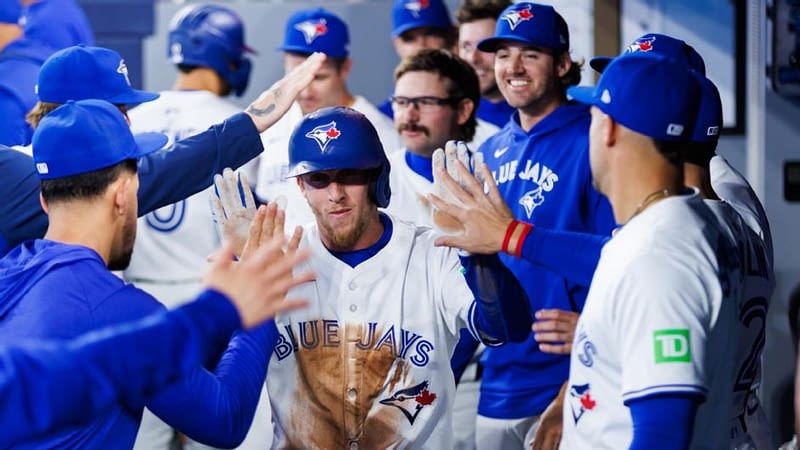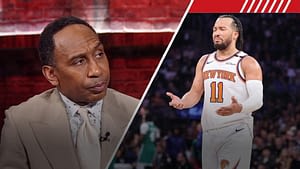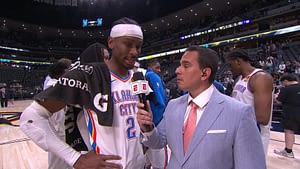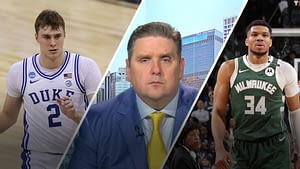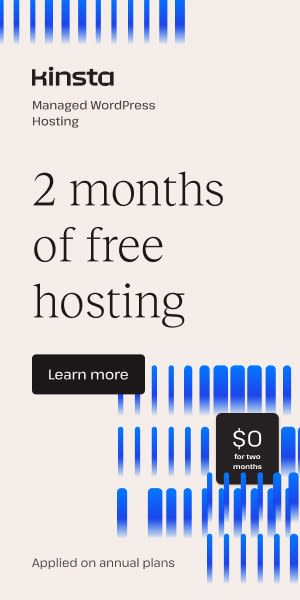Exploring the Intricacies of the 2025 MLB Trade Deadline
As we approach the Major League Baseball trade deadline, teams are typically divided into two distinct groups: those looking to acquire talent and those willing to trade it away. However, the introduction of a third wild-card team for each league in 2022, expanding the playoff field to 12 teams, has given rise to a new category: opportunists.
These opportunistic teams find themselves on the fringes of contention, aiming to exploit a thin trade market by setting high asking prices for some of their players, hoping that a desperate contender will bite and offer maximum value.
In this evolving landscape, we have the Adders, the Dealers, and the Opportunists. This dynamic is just one of several factors shaping the 2025 trade market. Let’s delve into the key elements that will influence this year’s July 31 deadline, based on insights from executives around the league.
1. A Surge in Opportunists
The Milwaukee Brewers are hovering around .500 in a highly competitive National League. Even if they remain within striking distance of the division lead in July, their hopes may be dimmed if the Chicago Cubs continue their strong start. With the NL packed with playoff-caliber teams like the New York Mets, Philadelphia Phillies, and Atlanta Braves in the East, and the Los Angeles Dodgers, San Diego Padres, San Francisco Giants, and Arizona Diamondbacks in the West, Milwaukee’s chances of securing a wild-card spot are slim. According to Fangraphs, the Brewers have a 13% chance of winning the NL Central and only a 5.3% chance of earning a wild-card berth.
This situation might prompt the Brewers to follow the path taken by the Tampa Bay Rays at last year’s trade deadline, capitalizing on the scarcity of dealers in the market. Freddy Peralta has been one of the league’s top starters this year, earning an affordable $8 million, with Milwaukee holding an $8 million option for next season. If the Orioles acquire him, he could become their ace, while for the Yankees, he could be a reliable presence behind Max Fried and Carlos Rodon. If Peralta remains healthy, his value will never be higher than it is now.
The Rays were the opportunists of last summer, trading Randy Arozarena to the Seattle Mariners with two-and-a-half years of team control remaining and dealing Isaac Paredes to the Cubs, despite being just 1½ games behind for the third wild card on the last Sunday of July. Tampa Bay didn’t go into full sell mode; instead, they saw a stark trade market and capitalized.
It’s possible, perhaps even likely, that the Brewers won’t choose this path. Owner Mark Attanasio is known for his competitive nature and places a high value on making the playoffs. Some rival executives don’t believe Milwaukee would consider trading Peralta if they remain within range of the Cubs, managed by former Milwaukee manager Craig Counsell.
For teams stuck amid the pack of contenders, it’s something worth considering:
-
St. Louis Cardinals: They’re on a winning streak and have communicated to other teams that even if they aren’t a front-runner, they might keep their tradable players in what is the last season of John Mozeliak’s tenure as head of baseball operations.
-
Minnesota Twins: They could dangle Byron Buxton, their dynamic and oft-injured center fielder, into the trade conversations. Buxton is healthy and playing well, and he’s under contract for the next three seasons at $15.1 million per year.
-
Toronto Blue Jays: Now that they’ve signed Vladimir Guerrero Jr. to anchor their team for a long time, they could look at the best ways to shape a future around him and weigh offers for players such as Chris Bassitt.
One executive working for a contender doesn’t believe the list of opportunists will be long. “Usually, what they ask for is unrealistic,” he said. “They’ll ask for your four best prospects and you say no and they move on and keep the player.”
2. The Mediocrity of the American League
The general mediocrity of the American League could greatly reduce its number of dealers. The Chicago White Sox are rebuilding and open for business, but the front office of any other team in the AL could convince itself that a playoff bid is possible — because it just seems like there are few, if any, great teams.
The Baltimore Orioles might be the best working example of this phenomenon. The start of the season has been disastrous for Baltimore, which has a rotation that has been pummeled regularly. But it’s hard to imagine the Orioles surrendering early, given their success of the past two seasons and their roster of young position players. So, they could be a club that is unwilling to part ways with talent at the deadline, even if they have a losing record.
3. Lack of Desirable Talent Among Potential Subtractors
The teams already viewed as potential subtractors might not have the talent contenders want. Clubs such as the Colorado Rockies, Miami Marlins, and White Sox don’t have much to offer in the eyes of rival evaluators. Other teams have monitored Marlins righty Sandy Alcantara and White Sox outfielder Luis Robert Jr., but both are struggling early in the season. Alcantara has an 8.42 ERA in seven starts since his return from elbow surgery, while Robert’s early slash line is .186/.293/.326, which doesn’t boost other teams’ interest — nor the leverage of the White Sox.
4. A Thin Market for Outfielders
It appears the market for outfielders will be very thin. Typically, the upcoming free agent class serves as a tool to define most of the players who could be traded before that year’s deadline — and quite simply, in the outfield, the pickings beyond Kyle Tucker are few.
The would-be opportunists could take advantage of a really soft outfield market and get value if they’re willing to dangle outfielders under team control beyond this season. For example, the Twins could set a solid price for Buxton and the Jays would probably draw a lot of interest for Daulton Varsho, an elite defender who won’t be eligible for free agency until after the 2026 season.
5. Scarcity of Quality Starting Pitchers
Very few good starting pitchers are expected to be available. If the Cardinals decide to deal players, right-hander Erick Fedde, who has a 3.86 ERA this season, could draw some interest. Fellow right-handed starter Sonny Gray is a three-time All-Star, but his contract is very backloaded — he’s owed $35 million in 2026 — and the last time he was traded to a contender midseason (from the Athletics to New York Yankees in 2017), it did not go well.
6. The Possibility of a Nolan Arenado Trade
A Nolan Arenado trade could still be possible. Conditions are emerging to foster this possibility, if Arenado waives his no-trade clause and if the Cardinals are willing to deal him. Normally, it’s not easy to move a position player with money attached at midseason, but contenders could be interested in acquiring the eight-time All-Star third baseman. The Cubs haven’t found a solution at third base, and the Yankees will soon try DJ LeMahieu in their ongoing attempt to fill the position. The Los Angeles Dodgers waited last season for Max Muncy to turn around a slow start, and he eventually did; this year, they’re waiting again.
Arenado, who killed a possible trade to the Houston Astros last winter, is owed about $24 million for the rest of this year, $27 million in 2026 ($5 million paid by the Rockies) and $15 million in 2027.
Originally Written by: Buster Olney
